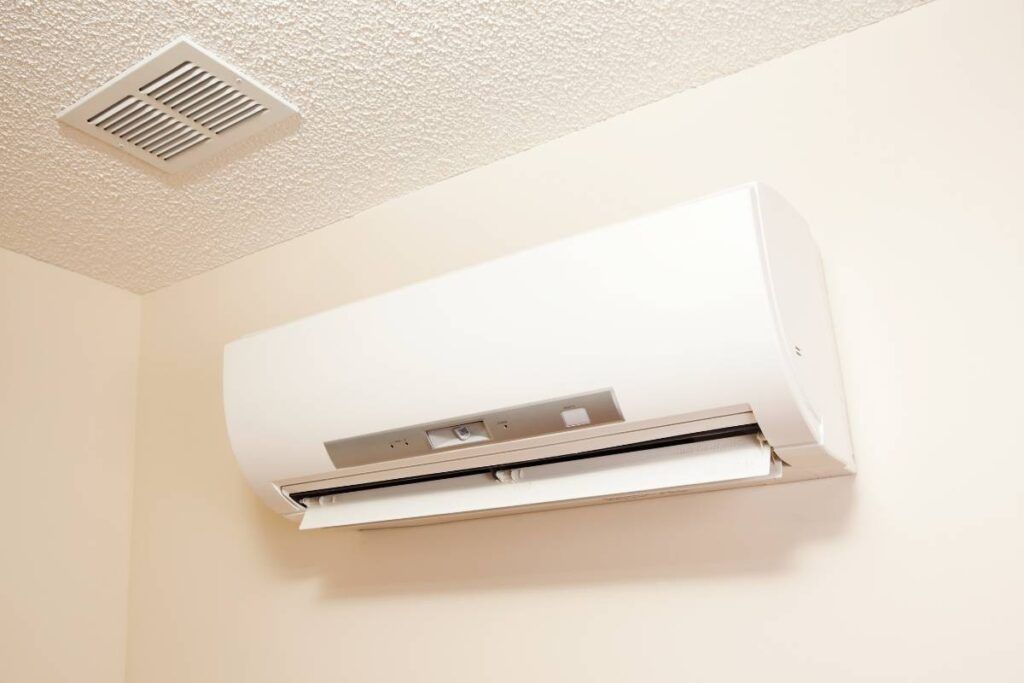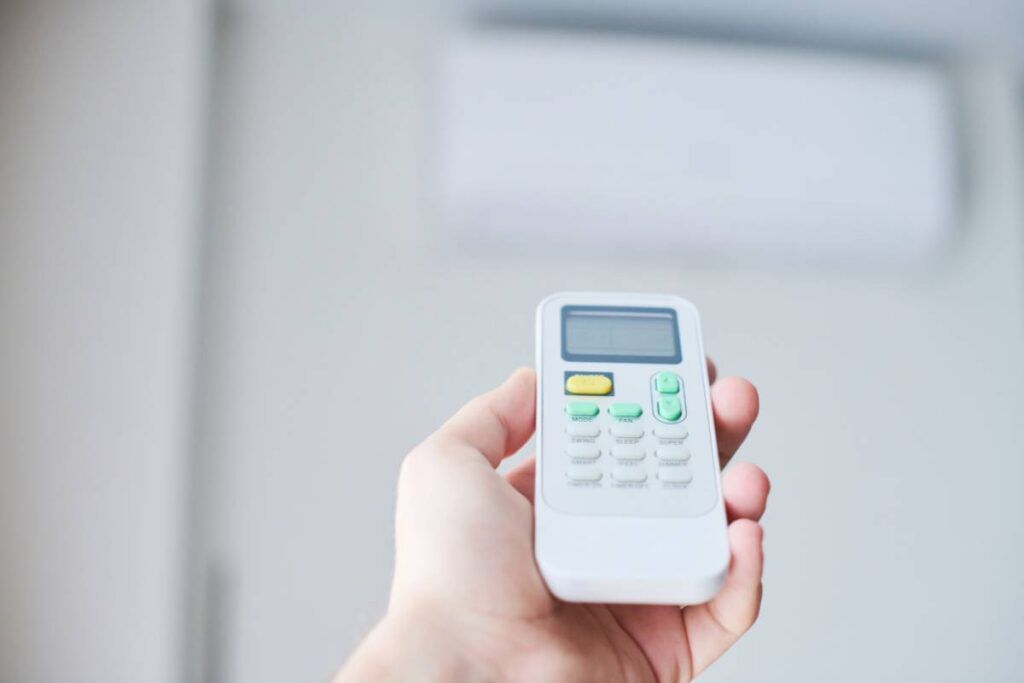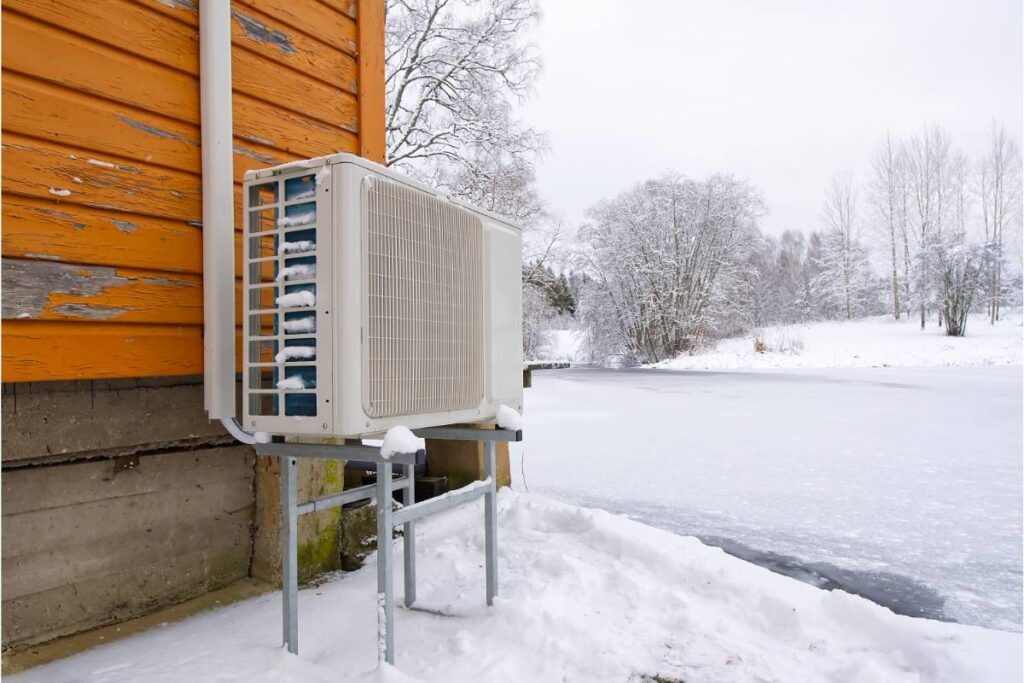A heat pump is an environment-friendly appliance that works as a cooling and heating system. But just like the other electrical appliances, a heat pump may also require resetting once in a while or multiple times.
To reset a heat pump, turn off the thermostat, then turn off the unit’s power switch and then turn off the breakers for the same unit. Once done, wait 3-5 minutes, and turn everything back on in reverse order. Your unit should reset within a few minutes and start functioning normally.
It is a brief outline about resetting the unit. Read this article till the end to know the detailed procedure, when and why your unit requires resetting, and some tips and considerations to follow while resetting the unit.

Check out our list of top-handpicked products for all your electrical, appliance, and HVAC system needs to keep your home running smoothly.
This post includes some affiliate links.Can you reset the heat pumps?
You can always reset your heat pump whenever you need it.
You can reset your unit independently if you know or follow the instruction book’s guidelines.
Resetting a heat pump is easier if it has a reset button.
Some models have a system selector switch.
Here, the unit should switch to the emergency heat, and you have to check the pump after six hours.
Sometimes, resetting is difficult, and to figure it out, you have to dig deep into the user’s manual or seek professional help.
Some heat pump brands where resetting is easier are Lennox, Carrier, Trane, Rheem, Ruud, American Standard, Coleman, Goodman, and York.
Before resetting your heat pump, you must find out what is wrong with your unit.
You will understand whether the problem will be solved after resetting or if there is something else you should do.
Even if you reset your unit, you should reset it only once or twice. Constant resetting will damage your unit.
You should turn off your unit and call a professional to fix the problem.
When should you reset your heat pump?

You must reset your unit whenever necessary. Below are some situations where you must try fixing your unit by resetting it:
- Cold air instead of warm air or vice versa.
- The unit keeps running on and off on its own.
- The digital thermostat display shows a blank screen.
- Service disruptions
- Power outages during building maintenance.
- Dirty air filters.
These are the times when your unit will malfunction and require resetting.
A very obvious sign that indicates that your unit requires a resetting is when you see your unit displaying a red or yellow light instead of a green one.
A green light means it is working properly. When it displays yellow or red, consider resetting the unit once.
Do heat pumps have a reset button?
Many heat pumps do not have a manual reset button.
Some people consider it a good thing as it prevents the users from constantly pushing the red button.
If you do not have a reset button, do not worry.
You can still reset your unit by using the power switches and breakers.
Where is the reset button?

The location of the reset button in the heat pumps is easy to find with the help of the user’s manual.
In most heat pumps, you will find a red button on the outside unit with two wires sticking out from the top.
In the Rheem and Ruud heat pumps, you will find the reset button near the bottom of your outdoor unit.
The buttons made by these companies are quite high-pressure reset buttons.
With these reset buttons, your system will turn off whenever it feels like doing it.
The Carrier heat pumps have reset buttons on the control panels or under the digital display.
How to reset a heat pump?
Resetting a heat pump is a shortcut to fixing it when it creates any issues.
You can solve the problem by simply resetting the unit if it is minor.
If the problem is something serious, resetting won’t work.
You should consult the user’s manual before resetting the unit.
It helps you know the right way to reset your unit.
You can save money by resetting your unit.
But you will require an HVAC professional if resetting does not solve the problem.
If your heat pump has a reset button, reset the unit by pushing that button.
Sometimes, you must hold the switch for 3 to 15 seconds and then release it.
If your heat pump does not have a reset button, here are the steps to reset your heat pump:
Step 1: Turn off your thermostat

While resetting your heat pump, the first step is to look at the thermostat and reset it.
Check the thermostat setting and adjust them.
A heat pump has two purposes – warming up in winter and cooling in the summer.
Adjust the thermostat as per your need – cooling or heating system.
If your digital thermostat is blank, the setting might be faulty, so you see a blank screen.
If you have a thermostat with a mercury switch, check that it is at the proper level.
If everything is fine, you can now turn off the thermostat.
Step 2: Turn off the power switch
Next, you should check the power switch. Sometimes, a turned-off power switch can prevent your unit from starting.
Locate the switch of your heat pump.
You will likely find it on the heat pump’s edge or the wall near the unit.
Flip the switch to the off position.
If your heat uses a system selector switch, shift it to emergency heat and wait 6 hours before shifting the settings back to normal.
Step 3: Turn off the circuit breakers and the fuse.

The heat pumps are expected to have two breakers.
One is for the air handler or indoor unit, and another is for the condenser or the outdoor unit.
Before you turn them off, make sure they are not tripped.
A tripped breaker is a common cause behind the heat pump not working.
If the breakers are not tripped, turn them off.
Check the fuse as well. You will find it next to the compressor.
A blown-up fuse can affect the functioning of your unit.
A fuse may blow due to power surges or power failure.
Turn off the breaker and replace the fuse if needed.
Step 4: Turn back on all the components.

Wait for 5 minutes after turning everything off.
After a few minutes, turn on every component one by one.
Start with the two breakers, the power switches, and the thermostat.
Turning them on in reverse order will maintain the heat pump’s memory function.
After a few minutes, your heat pump will turn on and start working properly.
Give your indoor unit 1 or 2 minutes and the outdoor unit about 10 minutes to turn on.
How to reset the breaker?
As I mentioned earlier, your heat pump will have two breakers for two units – the air handler and the condenser.
Sometimes, your unit will stop working due to the tripped breakers.
A breaker trips due to overloading and prevents short circuits and fire hazards.
While checking the breakers, if you find a tripped breaker, you should reset it.
When your breaker has tripped, the breaker will be either in the OFF position or between the ON and OFF positions.
If the breaker is in the OFF position, flip the switch to the ON position.
If the breaker is in the middle of the ON and OFF position, flip the switch to OFF, wait for some seconds, and then turn it to the ON position.
What should you do after a reset?

If you have successfully reset your heat pump, you do not need to call any professional.
Wait for some time to let your unit start.
Keep an eye on the unit to monitor its behavior.
Small malfunctioning due to dirty filters and power outages are common. You can fix them yourself.
But, if your heater is repeatedly turning off and you need to reset it too often, you should call for help and avoid resetting the unit again.
Frequent malfunctioning and reset signs signify a recurring electrical problem in the system.
If your heat pump does not turn on after a reset, you should call the local HVAC team to look into the matter.
The expert can diagnose the right problem and fix it.
Tips and considerations while resetting a heat pump.
A heat pump is an electrical unit, and you should be careful while resetting the unit.
If you feel hesitant, consider calling a professional to fix it.
If you wish to do it yourself, read the user’s manual thoroughly.
Follow the following safety measures to remain safe.
Circuit breaker considerations

While working with the circuit breakers, ensure that your hands and feet are fully dry.
Flip your breaker only using your hand.
Avoid any metallic objects.
Do not flip the breakers multiple times.
If it has failed the first or second time, leave it in the hands of the experts.
Heat pump considerations
Some models require manual overriding of the internal power switch to test the thermostat’s condition.
When your heat pump runs again after turning on the power switch, your thermostat may be faulty.
The override switch will be under the thermostat’s cover.
So, make sure your hands are dry.
Avoid having any objects or clothes in your hand.
Ask for the HVAC technician’s help.

If you have never attempted any electrical work before, you should call a service person for your safety.
You should have enough knowledge about these things and thoroughly go through the user’s manual to fix these things.
Besides, if you approach it and do something wrong, that may lead to expensive damages.
So, calling a professional is the best option.
What should I do after a power outage?
Suppose there has been an unexpected and extended power outage.
In that case, you should pay attention to your unit when the power comes back.
The system’s refrigerant requires some time to warm up.
The compressor will fail if you turn your unit on when the liquid is still cold.
After a long power outage, there is an ongoing process called refrigerant slugging when the outside temperature is cold or if your unit is old.
In such a condition, there will be a return of the liquid mass called the slug.
The slug will enter the compressor’s cylinders, compressing this liquid instead of the gas.
Turning on the heat pump right after an extended power outage will raise the cylinder’s pressure and damage the internal parts of the compressor.
Before you turn on the power, you need to prevent the refrigerant slugging.
When there is a power outage, set your thermostat to the emergency heating.
Once the power comes back, the alternative heating components will take centre stage, prevent slugging, and give your refrigerant time to heat again.
It would be best to wait 6 to 8 hours before switching back to the normal heat pump mode.
Do heat pumps require frequent resetting?

Heat pumps do not require frequent resetting. If the unit shuts off too often after resetting 1-2 times, there are other issues.
You should find it and solve it.
Do not immediately think of resetting your unit even if it has turned off.
If your heat pump has an LED light, the yellow or red light displaying indicates that your unit requires a reset.
The circuit breaker will require resetting if it trips, which is one common reason your heat pump requires resetting.
A circuit breaker can trip due to an overload or a sudden power outage.
Also check:
- 12 Reasons Your Heat Pump Is Running Constantly (+ Fix)
- 15 Reasons Your Heat Pump Is Freezing Up (+ Fix)
- 3 Reasons Your Heat Pump Fan Is Not Running (+Fix)
- 8 Reasons Your Heat Pump Is Short Cycling (+Fix)
- 9 Reasons Your Heat Pump Won’t Defrost (+Fix)
- Will Heat Pump Work Below Zero?
- How Often Should A Heat Pump Defrost?
Final thoughts
Before you reset your unit, you must specify the real cause for which your unit is requesting a reset. If you do not solve the problem and reset your unit, it will likely turn off again after some time or days. You must reset your unit if your unit shows a red or yellow light.
If your unit has a reset button, you need to push it or press it for a few seconds and then release it. If you do not have a reset button, turn off your thermostat, power switches, and breakers. Again turn them on in the reverse order – breakers, power switches, and the thermostat.
Turning them on in the reversing order maintains the memory function. If you have an extended power outage, turn on the emergency heat and wait 6 hours to turn back the unit with normal settings. It will prevent refrigerant slugging.
How long will the heat pump take to reset?
Resetting a heat pump can be challenging or straightforward. The entire process of resetting the heat pump and turning it on will take 15 minutes.
What will make your heat pump stop working?
Resetting is a temporary fix. Generally, the possible causes behind the problem are faulty thermostats, dirty filters, damaged contactors, incorrect unit size, leaking refrigerant, or electrical issues.
